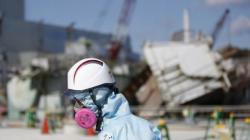NASA Say Our Sun Looks Like It’s Swallowing Itself
NASA have revealed that a huge hole has appeared on the Sun, which covers a staggering ten percent of its entire surface. Footage captured by the Solar Dynamics Observatory between May 17 and 19 shows a huge black hole on the Sun’s upper half, known as a coronal hole. Express.co.uk reports: A NASA spokesman said: “Coronal holes are low-density regions of the sun’s atmosphere, known as the corona. “Because they contain little solar material, they have lower temperatures and thus appear much darker than their surroundings.
